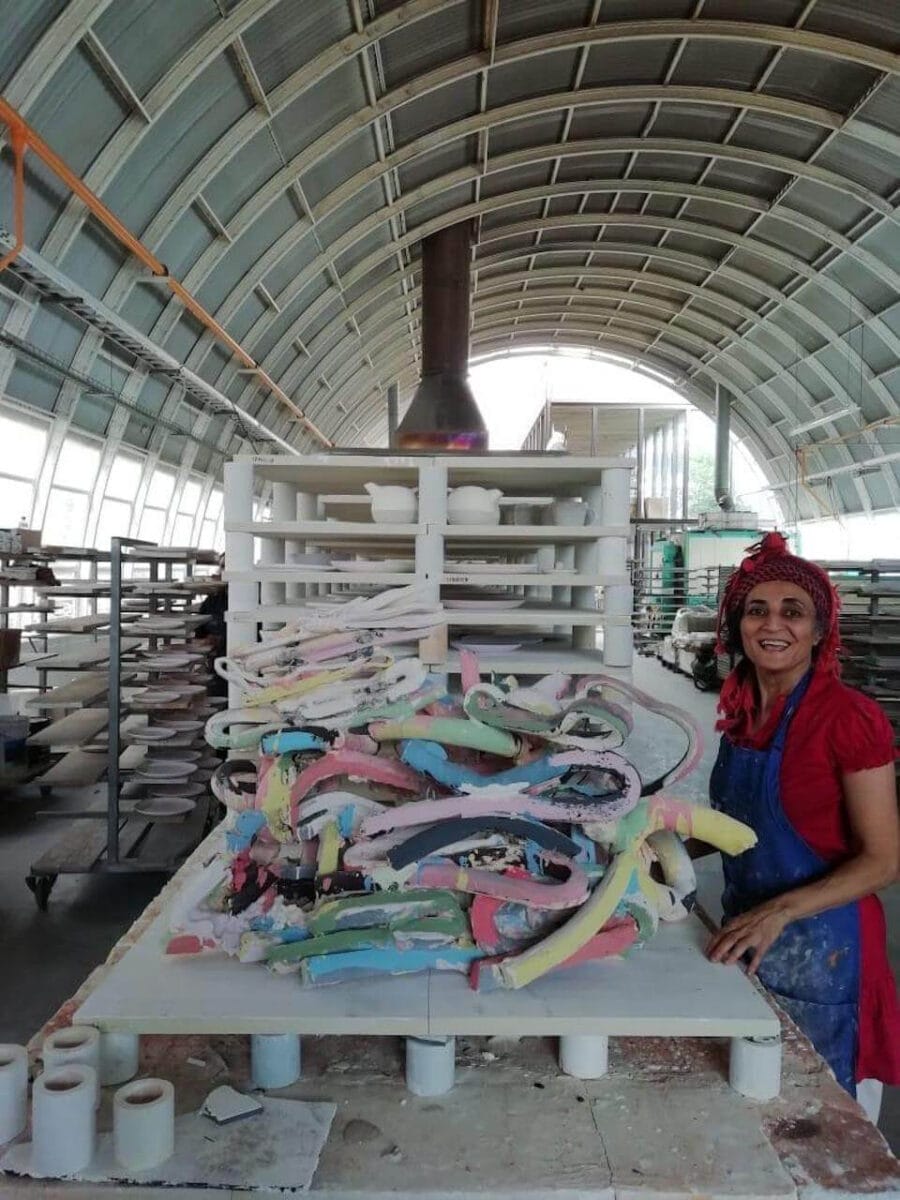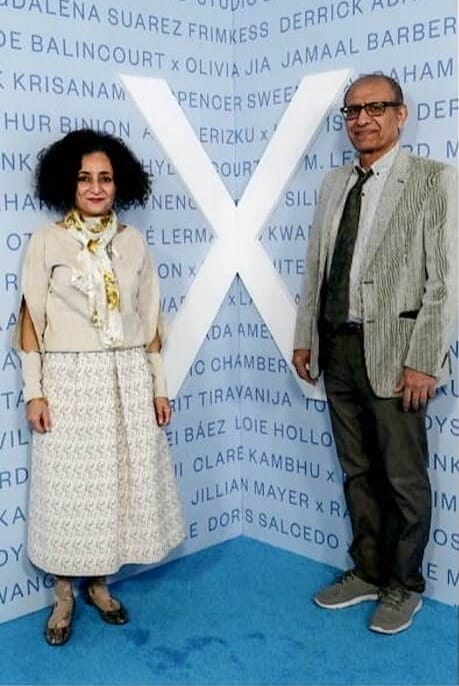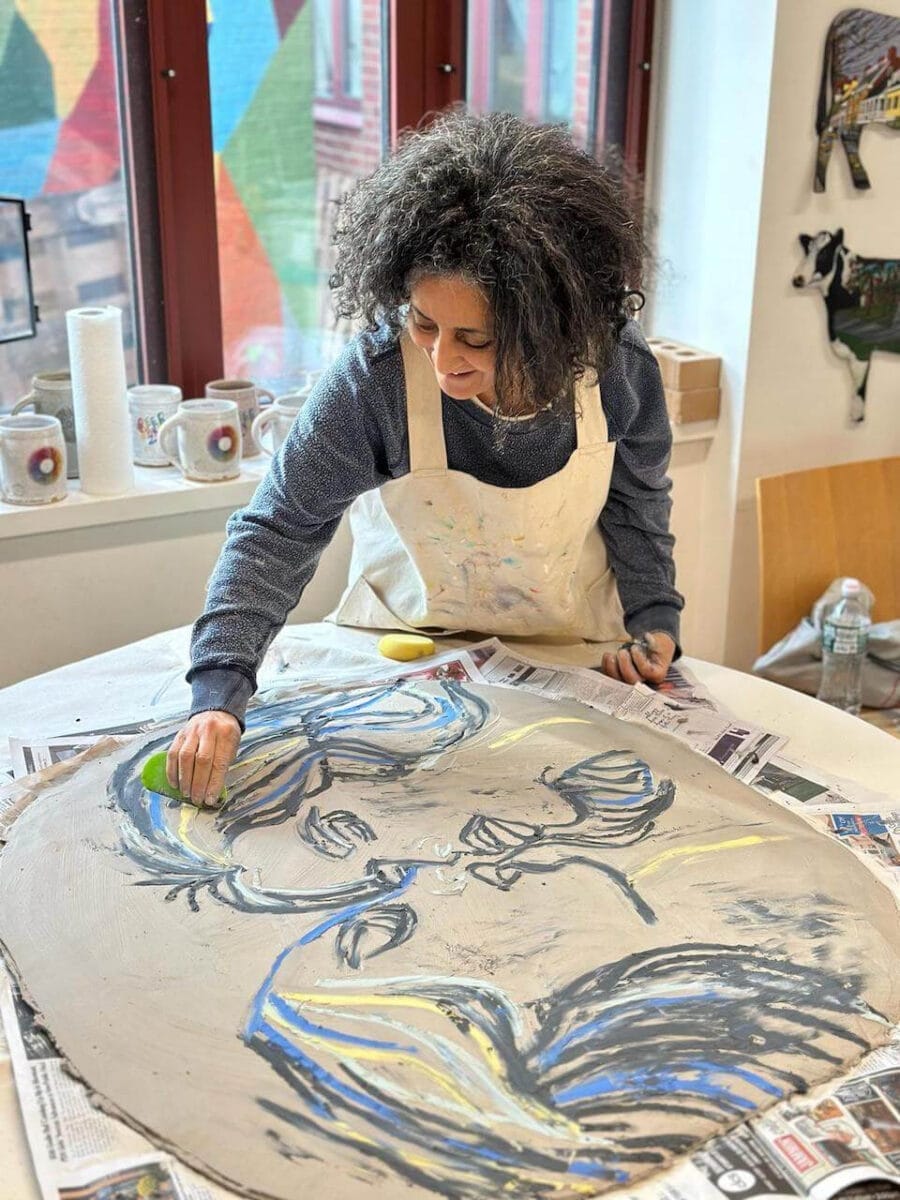Created in different renditions for different locations around the world, Ghada Amer’s series of Women’s Qualities gardens use plants and flowers to spell out words commonly associated with women’s traits in block letters. Instead of painting flowers with oils or pastels, or even with thread – one of her signature mediums – Amer “paints” an organic canvas with different types of flora rising out of the ground to form words for visitors to read and peruse.
Flowers and plants have long been used in art to communicate women’s qualities or values and to play a decorative role as well as a symbolic one in creative works. Woven millefleurs (literally “thousand flowers,” in French) were often used to communicate religious or secular ideas, as Eleanor C. Marquand explained in her detailed study of the Unicorn Tapestries, “Plant Symbolism in the Unicorn Tapestries,” 1938. (1)
The Unicorn Tapestries, drawn in Paris around 1500 and gifted to the Metropolitan Museum of Art by John D. Rockefeller in the 1930s, are a remarkable set of works that provide an interesting complement and foil to Amer’s contemporary garden. For example, the various plants and flowers that appear in The Unicorn Rests in a Garden, such as the pomegranate, the wild orchid, and the thistle, are used to represent fertility, marriage, and procreation.
The innovation in Amer’s approach to writing with flowers is moving them from the background or periphery of an artwork to becoming the artwork itself. Amer’s plants and flowers are no longer the background filler, but rather the center of the living canvas of the garden. The transformation of gardens, plants, and flowers from decorative elements to subjects and methods of communication changes their symbolism from implicit to explicit. Before, flowers suggested or symbolized qualities – now, qualities are deliberately spelled out by flowers.
Twenty years after the first Women’s Qualities garden in South Korea (2000), Amer created a second rendition in New York City in 2020. This time, she asked different personal and professional contacts as well as passersby at the Rockefeller Center (yes, the same Rockefeller who gave the tapestries to the Met) what their most important women’s qualities would be. This questionnaire resulted in the twelve words Hard Working, Good Cook, Strong, Resilient, Beautiful, Sexy, Happy, Nurturing, Smart, Patient, Kind, Independent, and Elegant. Importantly, these words were planted using a variety of flowers with medicinal properties, a choice made by Amer to represent the long history of women’s roles as gatherers and providers, and their knowledge of medicine and healing. Once again, Amer’s flowers are not just decorative – and in addition to clearly communicating qualities, they also represent food for the body and for the soul.
The flower symbolism in the Unicorn Tapestries and Amer’s Rockefeller Garden communicate messages about women, but also messages about what it means to be a woman artist. The practice of painting with flowers, like Amer’s practice of painting with embroidery, is another initiative to elevate women’s knowledge and expertise in embroidery and gardening, long classified as craftwork, to high culture. “I thought, what would a woman do if she was outside – not embroidering? She would garden,” Amer said in an interview about Women’s Qualities to the National newspaper in 2020.
Via her greening of a corner of New York’s urban jungle – part of a movement to introduce garden spaces into urban settings – Amer’s act of creating a garden and spelling out women’s qualities can also ultimately be read as an empowering, feminizing action. Using gardens –sources of healing and nourishment, and places of personal and creative expression — as her medium, women’s qualities are brought into focus in the otherwise masculine and sterile environment of downtown New York’s phallic skyscrapers, paved concrete, and polished metal.
Sources:
(1) Marquand, Eleanor C. “Plant Symbolism in the Unicorn Tapestries.Parnassus”, Oct., 1938, Vol. 10, No. 5 (Oct., 1938), pp. 2-8+33+40 Published by: CAA Stable
(2) The Unicorn Rests in a Garden (from the Unicorn Tapestries). The Metropolitan Museum of Art.
(3) Gronlund, Melissa. “What does it mean to be a woman? Artist Ghada Amer spells it out in flowers”. The National, September 10, 2020.






